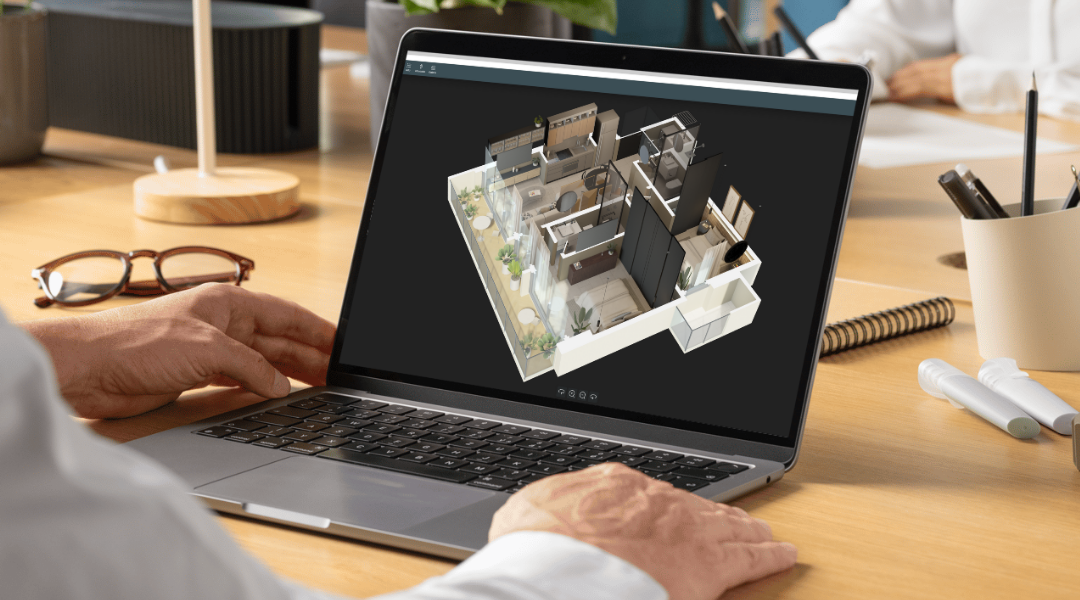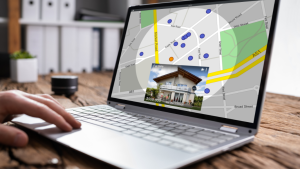Static renderings and brochures no longer meet the expectations of today’s homebuyers. The digital revolution has transformed how people shop for everything—including homes. With just a few clicks, consumers now expect interactive, detailed previews of what might be their largest investment ever.
For home builders across the US and Canada, this shift presents both a challenge and an opportunity. Those who adopt immersive 3D technology are discovering a powerful competitive advantage that separates them from builders still relying on traditional sales methods.
Why Traditional Home Sales Methods Fall Short
The conventional approach to selling pre-designed homes has significant limitations. Flat images, printed brochures, and spreadsheets fail to spark the emotional connection that drives purchasing decisions. These static presentations force potential buyers to use their imagination to visualize spaces—an unnecessary hurdle in today’s tech-driven market.
The limitations become even more apparent when selling to remote buyers. With migration patterns showing Americans and Canadians increasingly willing to relocate across states and provinces, builders need tools that can effectively showcase properties to buyers who cannot visit in person.
This distance barrier creates friction in the sales process and can significantly extend the time from initial interest to purchase commitment. It also limits your market reach to primarily local buyers—a substantial disadvantage in our increasingly mobile society.
Meeting Modern Homebuyer Expectations
Today’s homebuyers bring e-commerce expectations to their home search. They want the ability to explore, customize, and visualize their potential new home from anywhere, at any time. The experience should be interactive, informative, and emotionally engaging.
Research shows that 93% of homebuyers begin their search online, and they increasingly expect rich, interactive content rather than static information. This expectation gap creates dissatisfaction when builders provide only traditional marketing materials.
Modern buyers also expect transparency and detail. They want to see exactly what they’re getting before making a decision. Interactive 3D experiences satisfy this need by providing comprehensive, accurate representations of homes that build confidence in the purchasing decision.
The Transformative Power of 3D Interactive Experiences
Immersive 3D sales tools fundamentally transform the home buying experience. Instead of passive viewing, buyers become active participants in exploring their potential new home. This engagement creates emotional connections that flat images simply cannot match.
These interactive experiences allow buyers to virtually walk through homes, inspect details from any angle, and even test different design options. The ability to personalize the experience makes buyers feel more connected to the property and more confident in their decision-making.
For builders, this technology extends market reach dramatically. A fully interactive 3D experience allows you to effectively sell homes across the country without geographical limitations. Your portfolio becomes accessible to anyone with an internet connection, opening up entirely new markets.
Key Benefits for Home Builders and the immersive 3D
The advantages of implementing immersive 3D sales tools extend beyond just meeting buyer expectations. Home builders who adopt this technology report significant business improvements:
Accelerated Sales Cycle
When buyers can thoroughly explore and understand a property virtually, they move through the decision-making process faster. This acceleration happens because 3D experiences answer questions and address concerns that would otherwise require multiple in-person visits or lengthy email exchanges.
The immersive nature of 3D experiences also creates stronger initial interest and emotional investment. Buyers who connect with a property through interactive exploration develop stronger purchase intent earlier in the process, reducing the time from first contact to commitment.
Expanded Geographic Reach
With interactive 3D experiences, physical distance becomes irrelevant to the sales process. This technology effectively removes geography as a limiting factor, allowing builders to market their designs to buyers anywhere in North America.
This expanded reach is particularly valuable for builders in regions experiencing population shifts or for those with designs that might appeal to buyers from different regions with similar aesthetic preferences. Your portfolio can now attract buyers from across the country who would never have discovered your offerings through traditional local marketing.
Reduced Marketing Costs
While implementing 3D technology requires initial investment, it often leads to reduced overall marketing expenses. Interactive models eliminate or reduce the need for expensive physical model homes, printed brochures, and some traditional marketing materials.
These virtual showcases also reduce the personnel hours required for initial showings, as prospective buyers can perform preliminary explorations independently. This efficiency allows your sales team to focus their energy on qualified leads who have already developed interest through the interactive experience.
Competitive Differentiation
In markets where most builders still use traditional sales methods, offering immersive 3D experiences creates immediate differentiation. This technological edge positions your company as innovative and customer-focused—qualities that resonate strongly with today’s homebuyers.
This perception of innovation extends beyond the sales process to shape how buyers view the homes themselves. Builders who embrace advanced sales technology are often perceived as more likely to incorporate modern features and quality construction into their homes.
Implementation Strategies for Success
Transitioning to immersive 3D sales tools requires thoughtful implementation to maximize return on investment. Consider these strategies when introducing this technology to your sales process:
Start with Your Best-Selling Designs
Begin your 3D implementation with the home designs that consistently perform well. This approach ensures your initial investment targets designs with proven market appeal, maximizing immediate impact while you develop expertise with the technology.
These popular designs will serve as your test cases, allowing you to refine your approach to 3D implementation before expanding to your full portfolio. The feedback from buyers interacting with these initial models will provide valuable insights for future development.
Integrate with Your Existing Sales Process
For maximum effectiveness, 3D experiences should complement rather than replace your existing sales approaches. Train your sales team to use these tools as enhancements that add value to their customer interactions rather than as replacements for personal service.
The most successful implementations use 3D tools to qualify and nurture leads before transitioning to personalized sales interactions. This combination of technology and human expertise creates a smooth buyer journey that maximizes both efficiency and customer satisfaction.
Showcase Customization Options
One of the most powerful features of 3D sales tools is the ability to demonstrate customization options instantly. By allowing potential buyers to visualize different finishes, colors, and features, you transform customization from an abstract concept to a concrete visual experience.
This capability not only improves buyer satisfaction but often leads to increased upgrade selection. When buyers can see exactly how premium options will look in their specific home, they’re more likely to invest in these higher-margin selections.
The Future of Home Building Sales with immersive 3D
The shift toward immersive 3D sales tools represents more than a temporary trend—it signals a fundamental evolution in how homes will be marketed and sold moving forward. As technology continues to advance, buyer expectations will only increase.
Forward-thinking builders who embrace these changes now will develop expertise and processes that position them for continued success. Those who wait may find themselves struggling to catch up in a market where interactive experiences have become the expected standard.
The most innovative builders are already exploring how to enhance their 3D experiences with additional technologies like virtual reality and augmented reality. These advancements promise to make the virtual home exploration experience even more immersive and compelling.
Taking the First Step
For home builders ready to transform their sales process with immersive 3D technology, the path forward begins with finding the right technology partner. Look for solutions specifically designed for the home building industry that offer both technical excellence and ease of integration with your existing sales processes.
The initial transition may require adjustment, but builders who have made this shift consistently report that the benefits far outweigh the challenges of implementation. The competitive advantage, expanded market reach, and improved buyer experience deliver substantial returns on the investment.
In a market where differentiation is increasingly challenging, immersive 3D sales experiences offer home builders a powerful way to stand out, connect emotionally with buyers, and sell more effectively across geographic boundaries. The question is no longer whether to adopt this technology, but how quickly you can implement it to stay ahead of changing buyer expectations.





